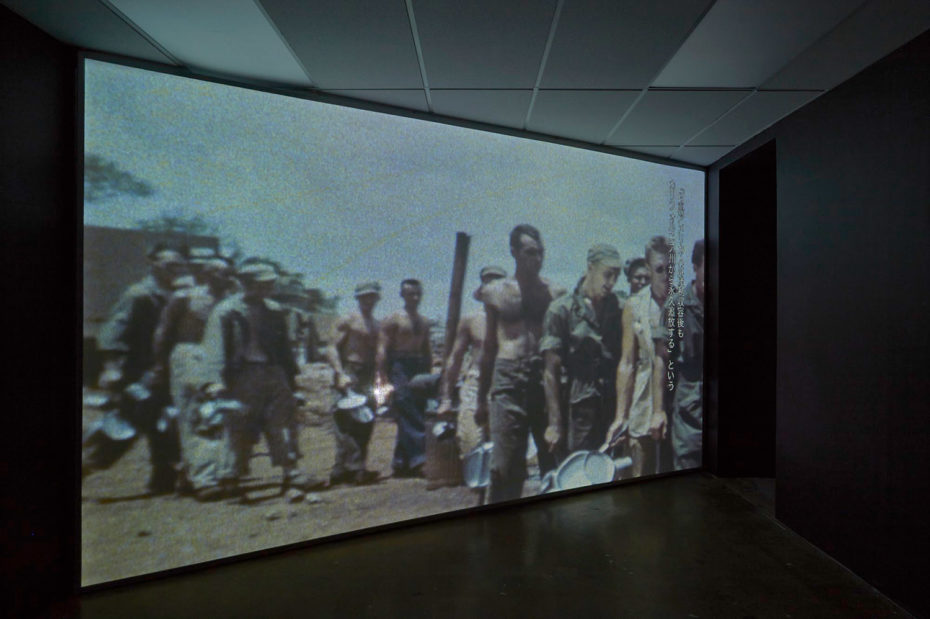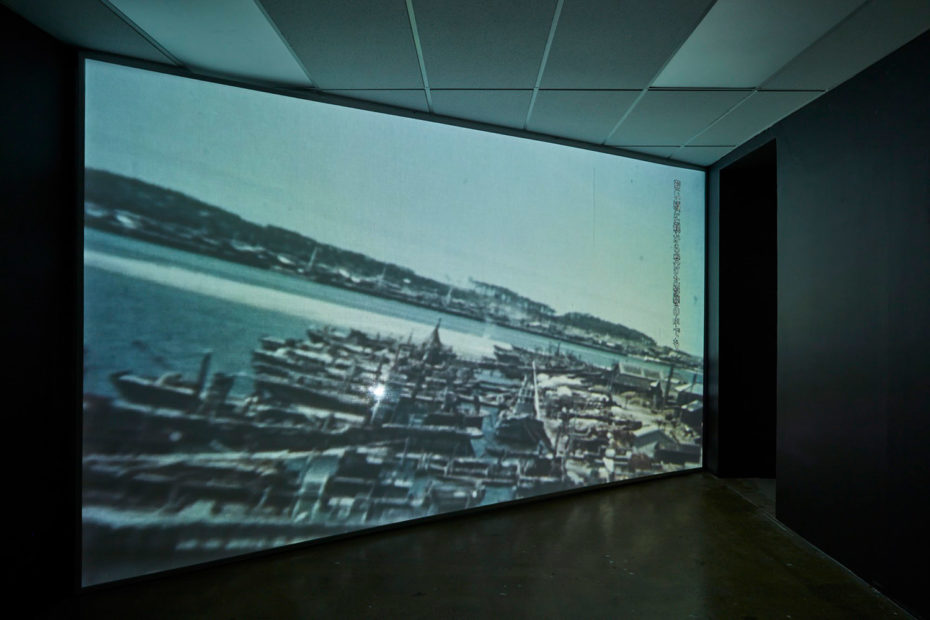Way of Life
Way of Life explores the internal moral dilemmas of Ben Kuroki who was the only American of Japanese descent to fight aerial combat in the Asia Pacific Theatre of WW2, resulting in his participation in the incendiary bombing of Tokyo, his ancestral homeland. His voice is edited together with American produced WW2 propaganda footage that was, post the dropping of atomic bombs on Hiroshima and Nagasaki, made in to the documentary The Last Bomb (1945), which essentially justifies US actions within the Asia Pacific. In Way of Life, this footage presents a highly racialised and militarised space which is at total odds to Kuroki’s hesitations concerning the moral system of shame inflected on him by his Japanese parents, and his own decisions to participate in the fire bombing of Tokyo. This type of internal hesitation is echoed through the work’s deliberate inclusion of the constructed interview context itself, which remains invisible yet aurally present. This creates an implicit relationship between Kuroki, Amundsen, and the work’s audience as attempts are made to reach for something that neither the interview process, Ben nor the artwork are able to fully yield. In other words, this lack of coherence between the aural and visual, between recalling and externalising experiences from one’s inner life speak to the larger surrounding political impacts of nationalism, racism and human belonging.
Series Information
- Year: 2016
- Dimension: Variable
- Medium: Single Channel HD Video



